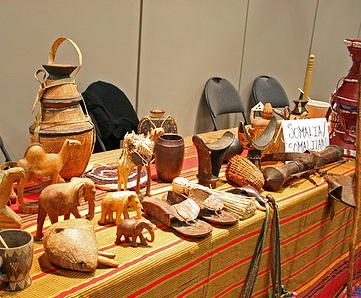This post discusses the cultural heritage of Somalia, which includes the Arts, and the customs and courtesies and further list the heritage sites of Somalia.
The varied cultural life of the Somali includes both traditional activities and, especially in the towns, many modern interests. Cultural activities consist primarily of poetry, folk dancing, the performance of plays, and singing. These traditional activities still retain their importance, especially in rural areas, and are practiced not only at family and religious celebrations but also at state ceremonies. On such occasions traditional local costume is generally worn.
Read: REGIONS OF SOMALIA
THE ARTS
Somali art is the artistic culture of the Somali people, both historic and contemporary. These include artistic traditions in pottery, music, architecture, wood carving and other genres. Somali art is characterized by its aniconism, partly as a result of the vestigial influence of the pre-Islamic mythology of the Somalis coupled with their ubiquitous Muslim beliefs. However, there have been instances in the past of artistic depictions representing living creatures such as the golden birds on the Mogadishan canopies, the camels and horses on the ancient rock paintings in northern Somalia, and the plant decorations on religious tombs in southern Somalia, but these are considered rare. Instead, intricate patterns and geometric designs, bold colors and monumental architecture were the norm.

Additionally, henna is an important part of Somali culture. It is worn by Somali women on their hands, arms, feet and neck during weddings, Eid, Ramadan, and other festive occasions. Somali henna designs are similar to other horn of Africans, often featuring flower motifs and triangular shapes. The palm is also frequently decorated with a dot of henna, and the fingertips are dipped in the dye. Henna parties are usually held before the wedding ceremony takes place.
There are many famous Somali artists, poets, musicians, actors, and dancers, some of whom live in exile. Nuruddin Farah, whose novels are written in English, has achieved international fame. (For Farah’s thoughts about his country at the turn of the new millennium, see Sidebar: Somalia at the Turn of the 21st Century.) Cultural institutions in Mogadishu are the National Museum, the Historical Museum, and the National Theatre.
CUSTOMS AND COURTESIES
Somalis warmly greet each other with handshakes, but shaking hands with the opposite sex is avoided by many. Common verbal greetings include:
Assalamu aleikum (Peace be upon you)
Maalin wanaagsan (good day/morning)
Galab wanaagsan (good afternoon)
Habeen wanaagsan (good night)
Iska warran and Ii waran (How are you?)
Nabad (I’m fine or literally translated meaning (peace)
Somalis use sweeping hand and arm gestures to dramatize speech. Many ideas are expressed through specific hand gestures. Most of these gestures are performed by women:
A swift twist of the open hand means “nothing” or “no”.
Snapping fingers may mean “long ago” or and “so on”
A thumb under the chin indicates “fullness”.
It is impolite to point the sole of one’s foot or shoe at another person.
It is impolite to use the index finger to call somebody; that gesture is used for calling dogs.
During the Siad Barre era, a new greeting intended to combat the prevalence of clannism was introduced called jaale, which in Somali has dual meanings, including the color yellow and comrade or friend.
SOMALIA HERITAGE
Somalis are ethnically of Cushitic ancestry, but have genealogical traditions of descent from various patriarchs associated with the spread of Islam. Being one tribe, they are segmented into various clan groupings, which are important kinship units that play a central part in Somali culture and politics.
SOMALIA HERITAGE SITES
Iskushuban.
Amud.
Bargal.
Botiala.
Dhambalin.
Dubar Fort.
El Ayo.
Erigavo.